There could be several reasons to question a red dot’s accuracy. You might be wondering if your fist-sized group at 100 yards is good enough or if you should use a red dot for a hunt.
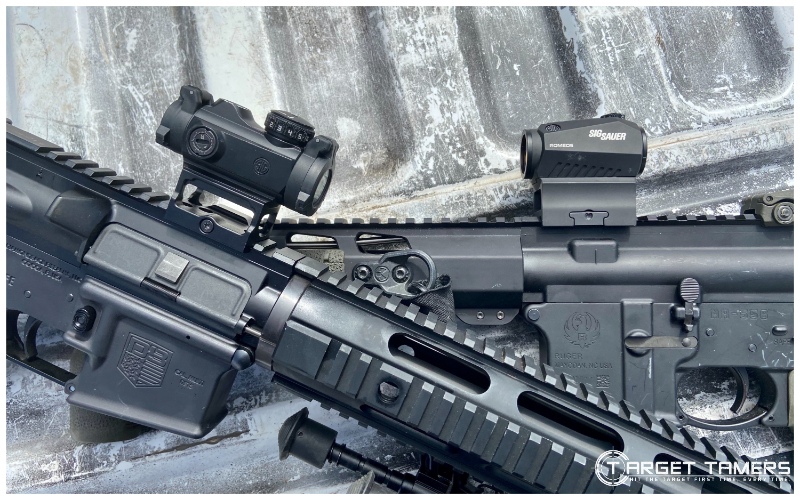
In general, the best red dot sights can be very accurate. The dot size is a good indication of expected group size at 100 yards but there’s a lot more to consider. A shooter’s skill level, firearm, ammo, optic mounts, etc. also play a role in whether a shooter is as precise as can be.
To acquire a quick understanding of how accurate red dot sights are, this guide explains dot size, subtension, and how to test for red dot sight accuracy.
Are Red Dot Sights Accurate?
Red dot sights can be very accurate optics. Apart from red dot sight quality, tracking performance, and dot size, one must consider skill level, firearm, ammunition, target distance, environmental conditions, and more to maximize precision accuracy.
However, we can look at the red dot’s features to determine the type of accuracy we can get from it. Primarily, we can look at its dot size, how it relates to the target, and how small we can make adjustments for ultimate precision.
Red Dot Reticles (Dot Size)
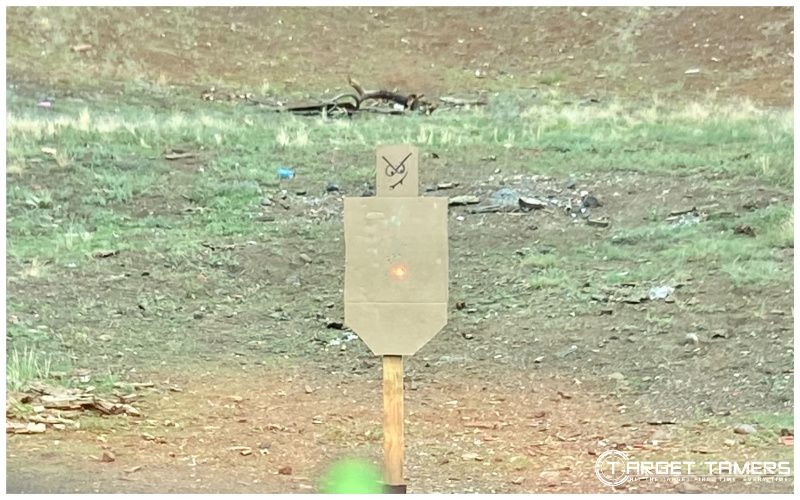
The most recognizable red dot reticle is the dot, and it comes in various sizes. The simplicity of the dot results in fast reticle and target acquisition. Acquiring the sight picture is uncomplicated, and this straightforward concept of using a red dot sight makes it an easy-to-use optic.
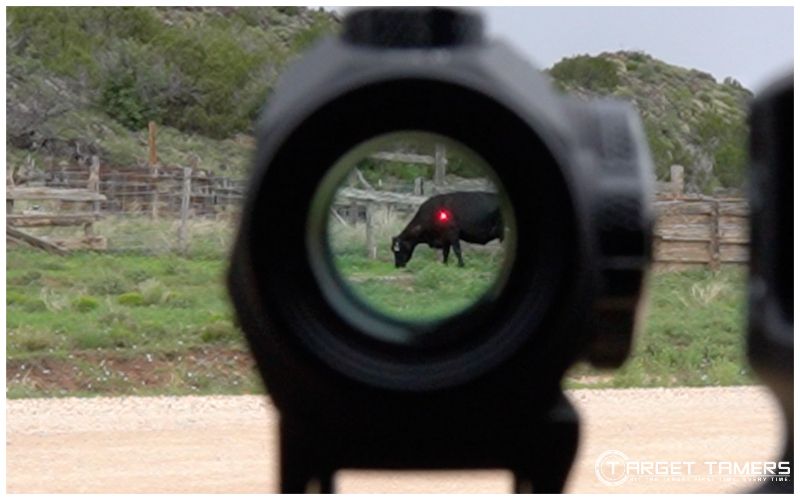
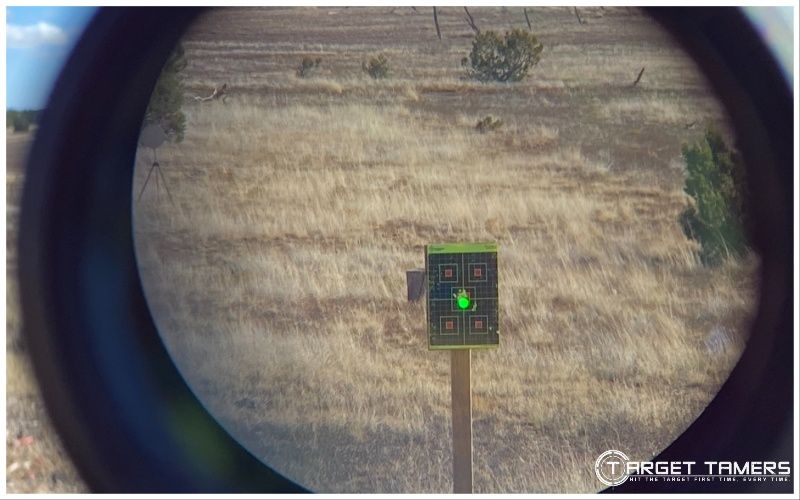
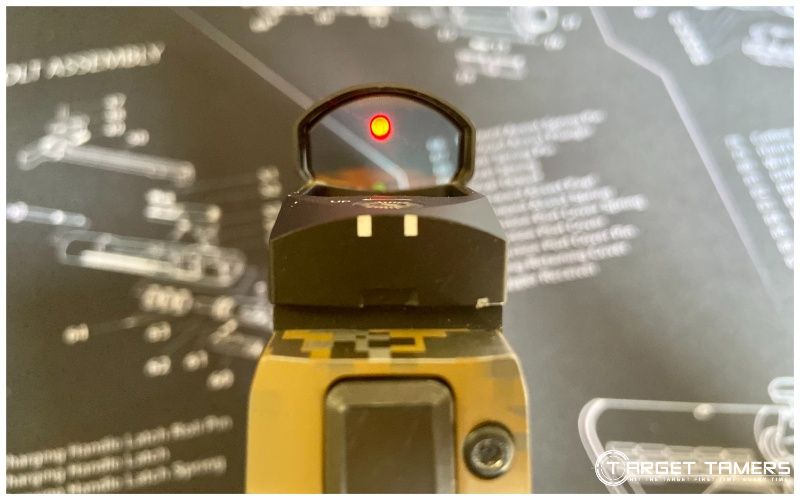
The most common dot sizes in red dot sights range from 2 MOA to 8 MOA. The dots in pistol red dot sights tend to be larger from 3 MOA to 8 MOA. These are ideal for close-range engagements. Since they’re larger, they’re faster to acquire (for the eyes to see) and appear to be brighter and thus can be faster to shoot with.
The dots in rifle red dot sights tend to be smaller from 2 MOA to 4 MOA. This is preferable for extended ranges from 50-200 yards. Since they’re smaller, they’re better for precision shooting than their larger dot counterparts.
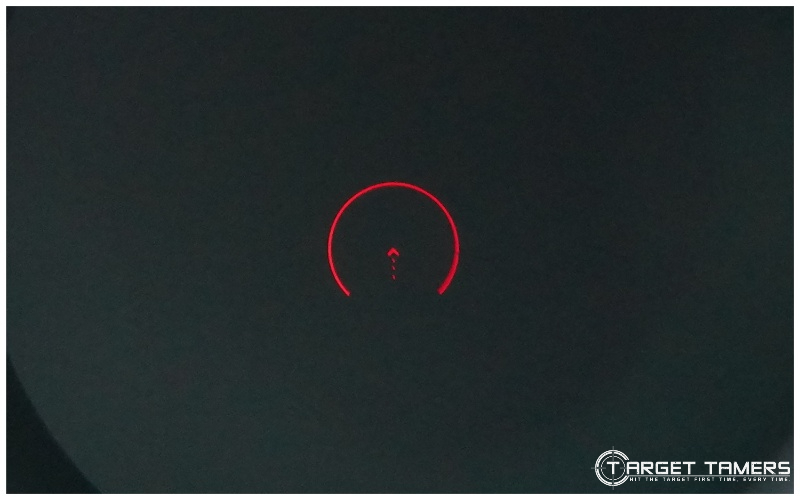
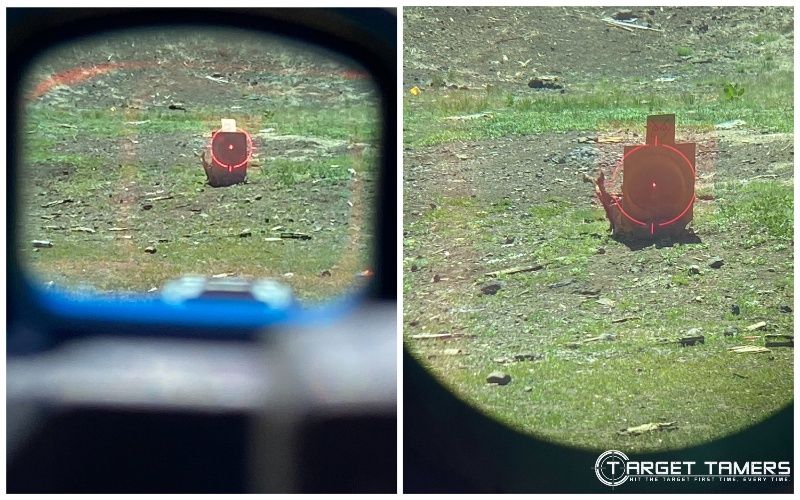
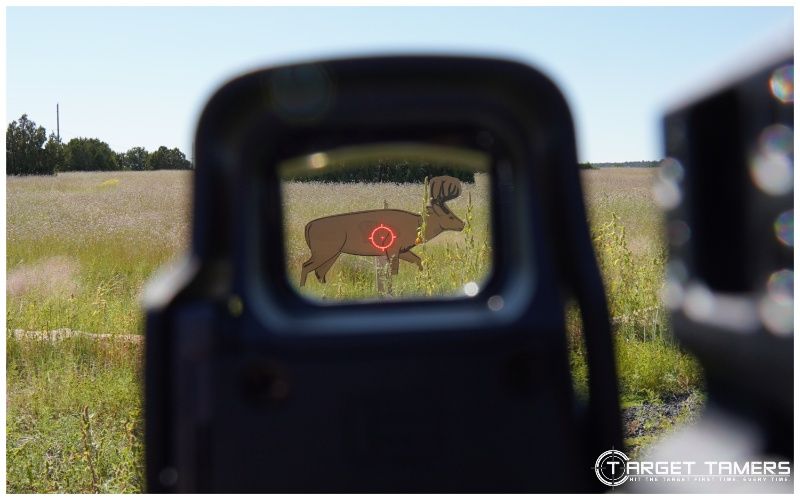
Though the singular dot is the most popular reticle in red dot sights, there are other reticle options. Primary Arms has the ACSS reticle, Swampfox has the BRC reticle, Holosun has the 2 MOA dot with a 65 MOA ring, and EOTech has the 1 MOA dot with a 68 MOA ring.
These reticle variations can also affect accuracy because of subtension.
Tip:
Larger dots may appear to be brighter, they’re fast to use, but they can inhibit precise aiming. They’re good for close-range shooting.
Smaller dots might not seem as bright, and they can be a little slower to use. However, they can increase the potential for improved precision and are better for mid to longer range distances.
Red Dot Subtension

Subtension refers to the target space that is physically covered up by the reticle or the dot. Thin crosshairs and small dots means that less of the target is covered up. This can improve precision. Thick crosshairs and large dots cover up more of the target which can inhibit precision.
To calculate subtension, you must know the size of the dot. Red dots are commonly measured in MOA (minute of angle). We know that 1 MOA subtends to 1.0472” at 100 yards. For most purposes, many of us just round that to 1” at 100 yards. With this information, we can calculate the subtension of any red dot sight at any distance.
| Target Distance | 1 MOA | 2 MOA | 2.5 MOA | 3 MOA | 4 MOA | 6 MOA | 8 MOA |
|---|---|---|---|---|---|---|---|
| 7 Yards | 0.07” | 0.14” | 0.175” | 0.21” | 0.28” | 0.42” | 0.56” |
| 25 Yards | 0.25” | 0.5” | 0.625” | 0.75” | 1” | 1.5” | 2” |
| 50 Yards | 0.5” | 1” | 1.25” | 1.5” | 2” | 3” | 4” |
| 100 Yards | 1” | 2” | 2.5” | 3” | 4” | 6” | 8” |
| 200 Yards | 2” | 4” | 5” | 6” | 8” | 12” | 16” |
The concept is that a 2 MOA dot should allow for your point of impacts to land within a 2” radius of your point of aim at 100 yards.
As you can see from the chart above, a smaller dot provides for precision shooting over a larger dot especially the farther you shoot.
Tip:
Taking the dot size and understanding subtension for the target distance can be a good indication of the type of accuracy you can expect from a red dot sight.
Is a Red Dot Only as Accurate as its Dot Size?
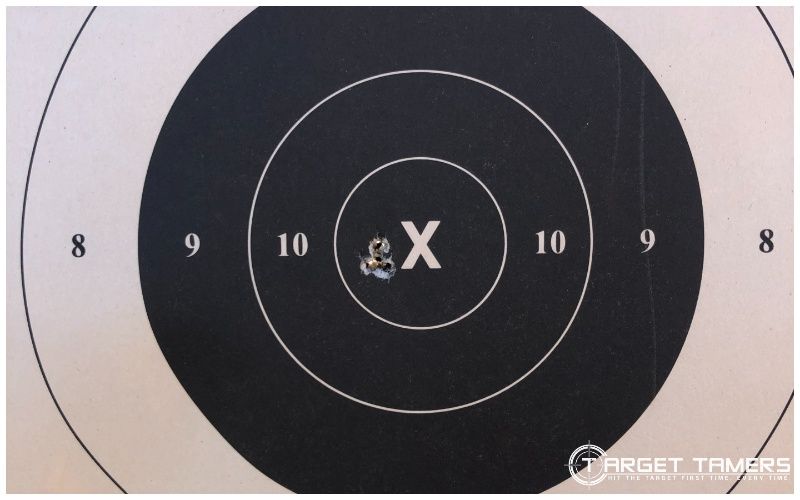
Now it might seem like I’m advocating the “a red dot is only as accurate as its dot size” mantra that is often accepted at face value, I’m not.
Some shooters with sub-MOA rifles shoot smaller groups than the actual size of the dot. With the right combo, meaning the right rifle, ammo, gear, and conditions, you could get groups that the majority of us won’t be able to replicate.
This kind of precision is achievable with a red dot sight regardless of the dot size. However, I’ll be the first to admit that I rarely get sub-MOA groups at 100 yards with a red dot sight.
Some of the time I can match dot size and other times I’m shooting groups larger than dot size and I’m okay with that – within reason.
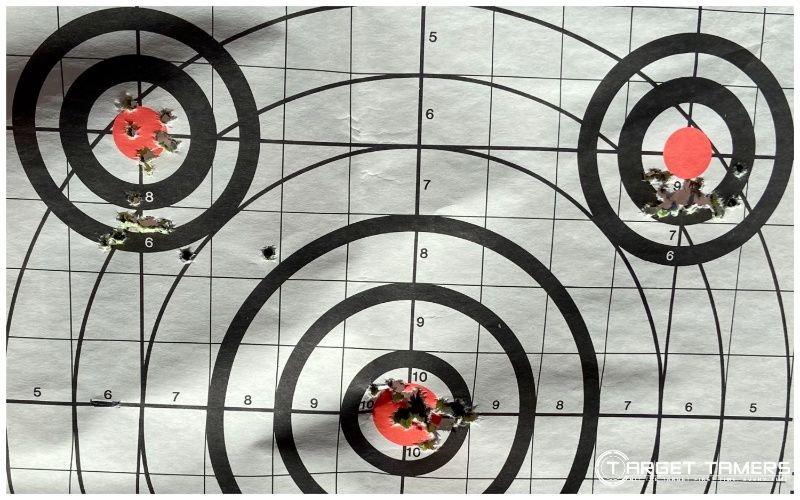
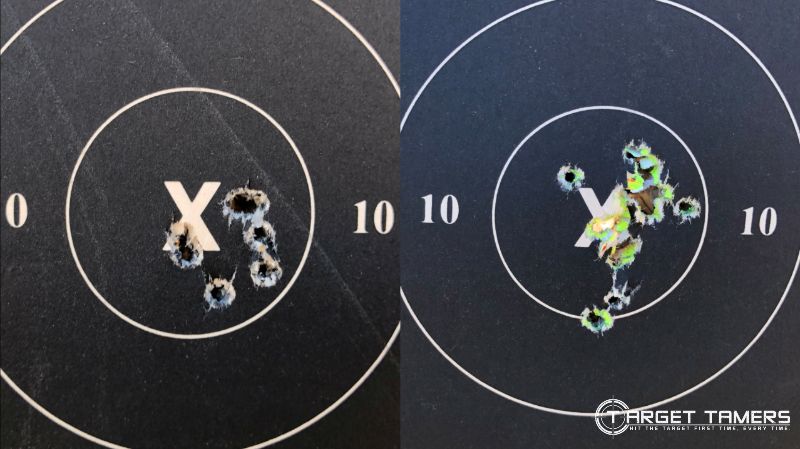
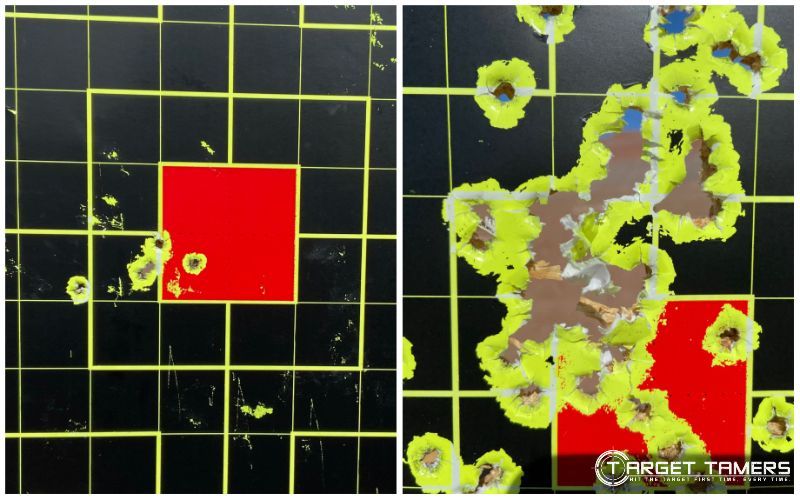
These differences can leave you wondering what size groups are good enough to determine if a red dot sight is accurate?
Even though we can measure accuracy by measuring group size (in MOA), ‘accuracy’ is relative as there is always a variation that will affect absolute precision. Whether it’s to do with the environment, firearm and parts, manufacturing, ammunition, the shooter, and so much more, the tolerance and acceptability of accuracy will vary from person to person.
So, what are you shooting and why?
Are you hunting, competing in a match, defending your family from home intruders? What kind of accuracy do you need to determine how accurate enough a red dot sight is for you?
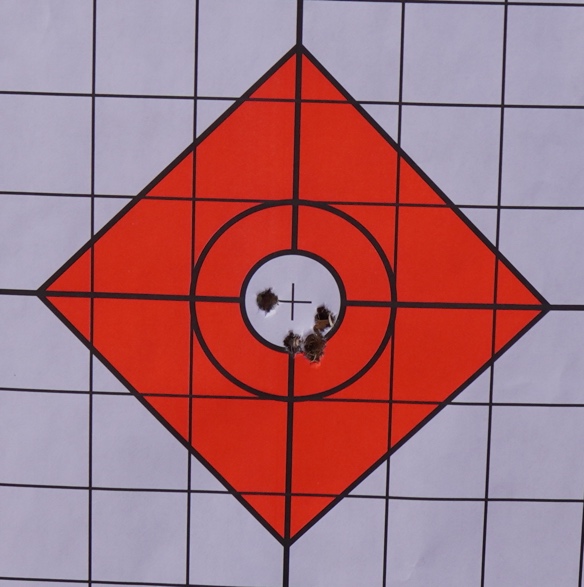
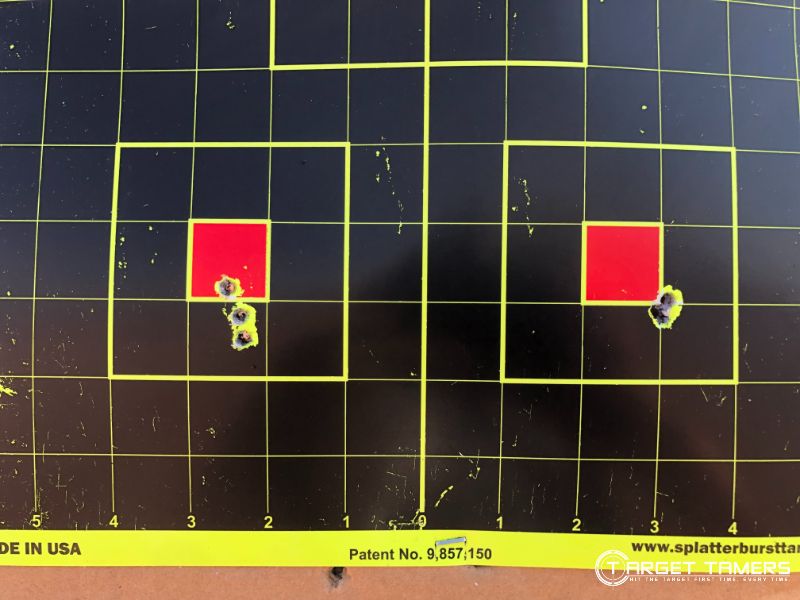
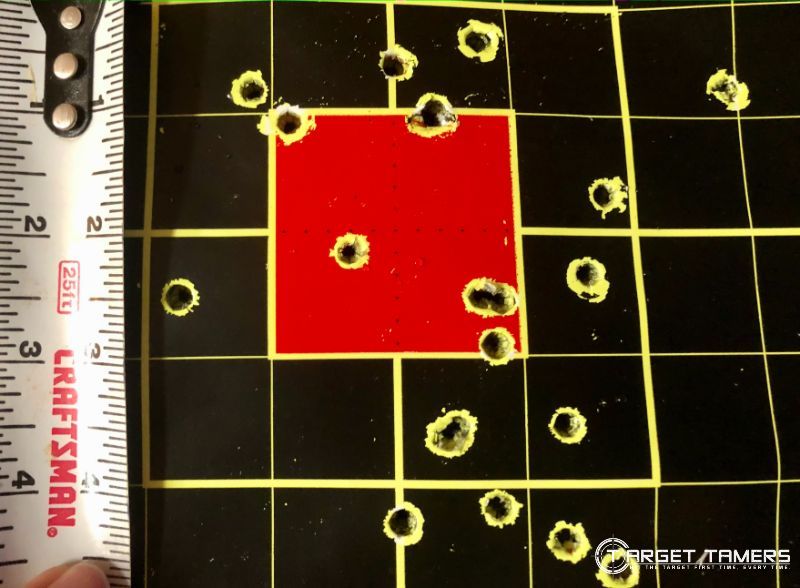
I would say if you’re testing out a red dot, if you can shoot sub-MOA groups with it, it’s a very accurate combo between the rifle, red dot, and your loads.
If you’re getting 4-5” groups at 100 yards with a 2 MOA red dot, I’d call this reasonable accuracy as you’re still nailing a headshot or whitetail heart/lungs kill zone at 100 yards. If you’re not ever shooting above this distance, you could be happy here. However, if you want to pop off soda cans at 100 yards or hunt with your red dot, you might want to work on accuracy here.
If you’re getting groups that looks like something in between these scenarios, then I’d say you’re doing just fine. More practice and experimentation might help to figure out what you can do better or if the red dot sight or something in your setup needs attention.
Rifle & Pistol Accuracy
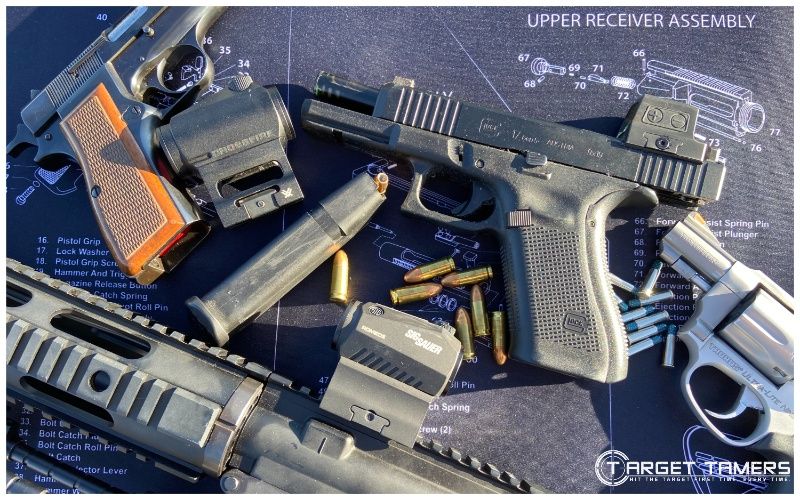
Though there’s a lot of emphasis on optic accuracy and performance in the field, competition, hunting, and at the target range, the firearm and ammunition shouldn’t be overlooked when accuracy is in question.
The handling and shooting experience between pistols and rifles is significant. Accuracy isn’t just determined by the red dot sight and its mount or the advertised “sub-MOA” performance of the firearm. It’s also affected by fundamentals like stance/position, grip, trigger control, recovery (consider recoil), etc.
Tip:
The focus on improving accuracy might need to be put on scrutinizing your shooting ability, your visual acuity, shooting fundamentals, and firearm and ammo limitations.
Red Dot VS Riflescope Accuracy
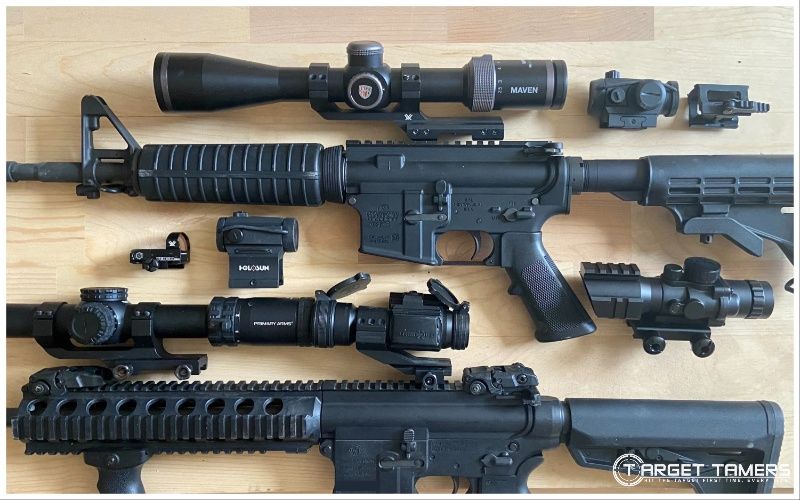
In general, red dot sights are not precision optics, and in comparison to riflescopes, the latter have the advantage in accuracy. Riflescopes have a complex erector system with very minute adjustments and finer reticles with minimal subtension that red dot sights can’t compete with.
Reticle variation is considerable between scopes and manufacturers. Take the Vortex Strike Eagle FFP LPVO. Its center dot is 0.75 MOA with a 2 MOA segmented horseshoe and 0.45 MOA BDC crosshairs.
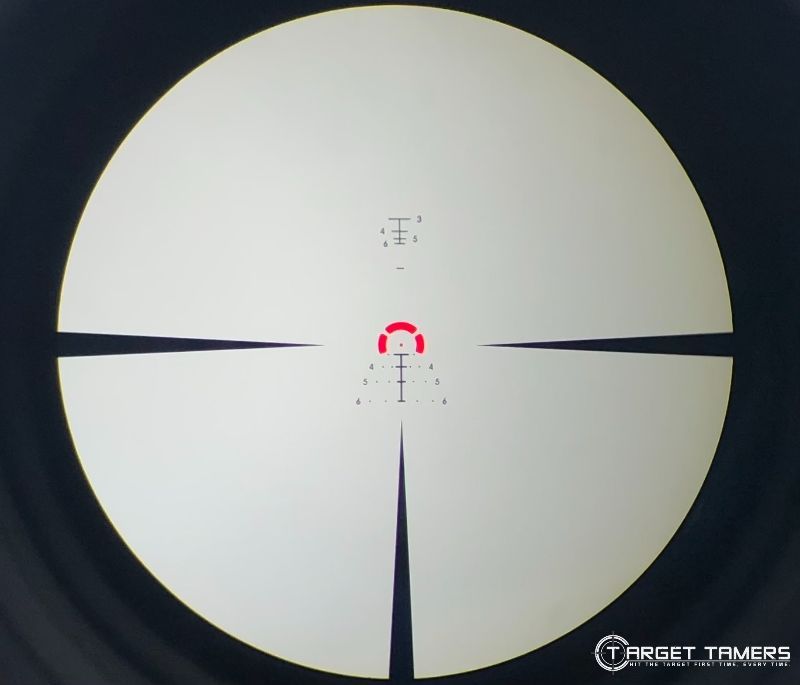
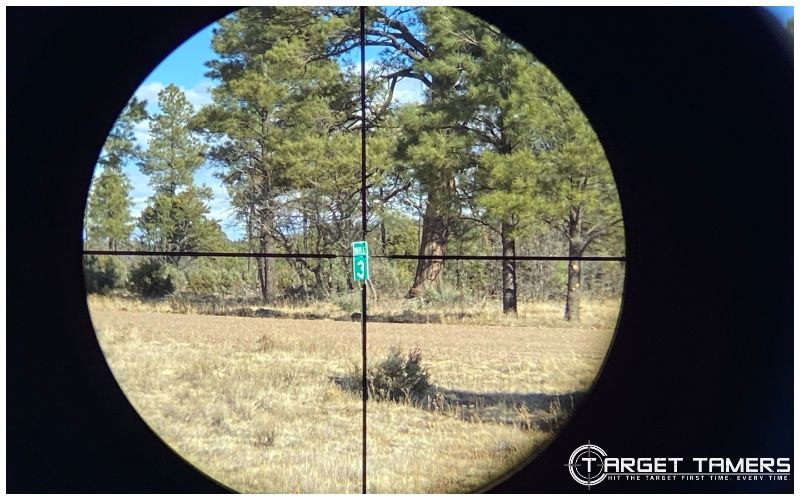
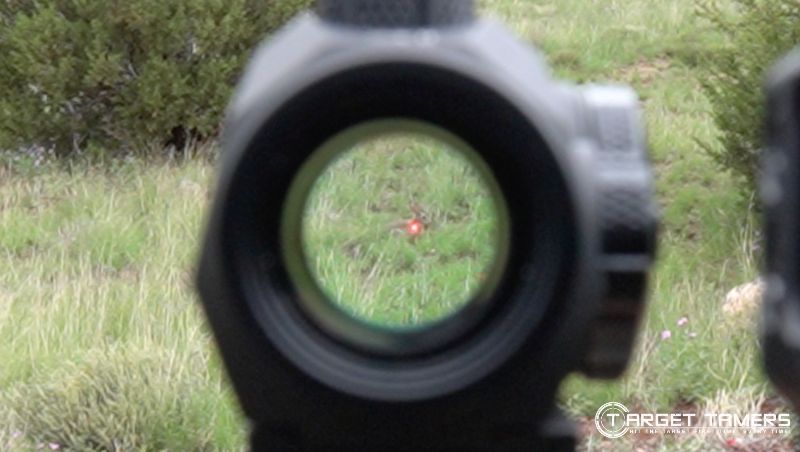
The center dot in the Leupold Mark 5HD TMR (MK) FFP reticle is 0.10 MIL with 0.2 MIL crosshairs and 0.4 MIL posts. The reticle features in riflescopes are much finer and thinner than the dots and reticles in red dot sights.
Scopes also have finer adjustments than red dot sights. Scopes can have as small as 1/8 MOA and 1/10 MIL adjustments. This means that every adjustment click will change the POI by 0.125” at 100 yards and 1 cm at 100 meters (approximately).
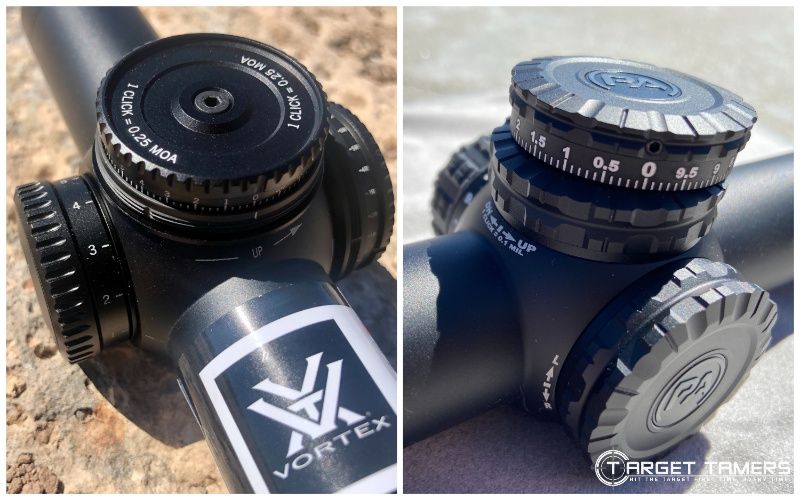
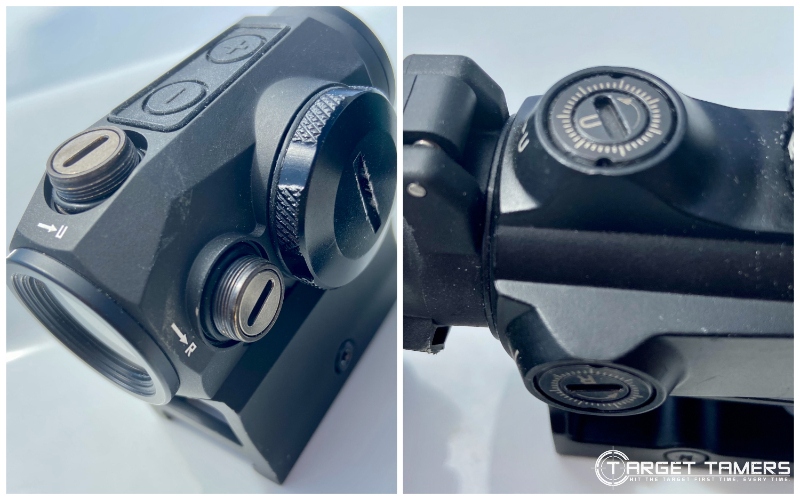
Most red dots have 1 MOA adjustments, but some have 0.5 MOA adjustments. This means that every adjustment click will change the POI by 1” or 0.5” at 100 yards.
Tip:
In total, riflescopes have minimal reticle subtension and finer adjustments which means they can be more precise than red dot sights.
How to Test Red Dot Sight Accuracy
One of the best ways to test red dot sight accuracy is to go ahead and attempt to zero it first starting with boresighting. I recommend starting at closer distances and then incrementally extending the range until you reach your desired zero distance.
This would look something like boresighting at 25 yards (or closer) and zeroing at 25 yards. Move to 50 yards, then 75 yards for a final zero at 100 yards. This method allows you to observe the red dot’s tracking performance while making it easier to sight in since you’re making small adjustments each time you move out.
Another way to test this is once you have a zero is to shoot 3 or 5-shot groups at each corner to form a square. The last group should have you back on your original group.

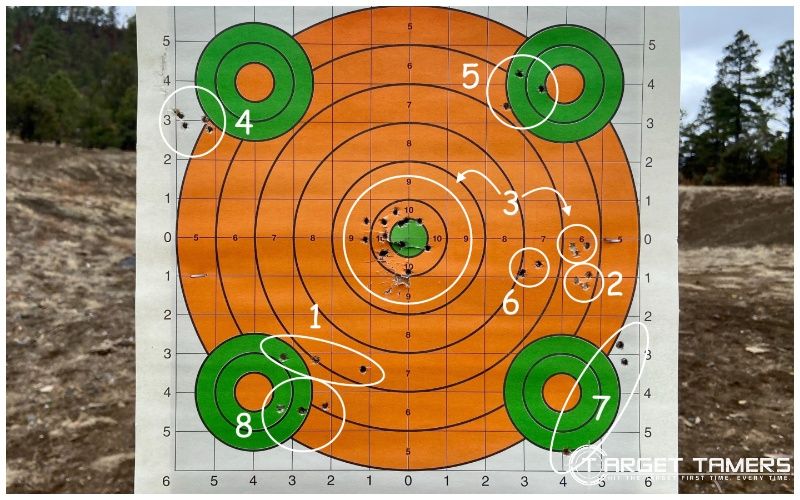
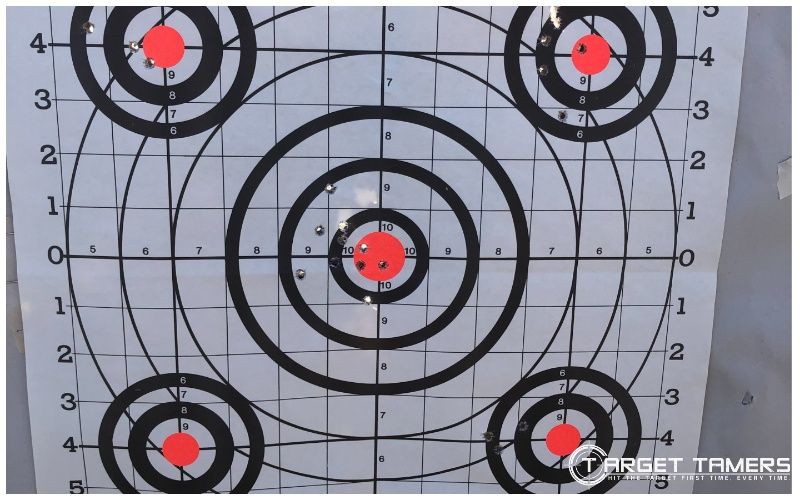
I like to use gridded targets for this with dedicated corner bull’s-eyes at even intervals. The center is my zero, and once I’ve achieved that, I’ll dial up and right to hit the first top right corner. Dial elevation only to come down for the next corner. Dial windage only to come left for the next corner and so on until I get back to my original group. I use this method for scope tracking too.
Note: Because you're dialing to judge tracking accuracy, you're aiming at only one spot every single time - the very center of the target!
If groups are acceptably strung together and show consistent point of impacts as you track across the grid, I’d call it an accurate red dot sight.
Tip:
However, it’s not always that easy to put your expectations into practice. Between incorrectly torqued down mounts, user error, and unstable testing conditions or gear, you will have inconsistent results.
If there are still significant inconsistencies with the red dot sight even with mitigating other variables, it could be defective.
FAQ's
In general, red dot sights can allow a shooter to be more accurate than iron sights for several reasons including high dot visibility, reduced number of focal planes, and fast and easy sight alignment and sight picture. Red dots are easier to zero and adjust.
Though red dots don’t inherently make you more accurate, they do provide opportunities for you to improve your precision. (See our Iron Sights VS Red Dot comparison guide for more info.)
A red dot is good for as far as you can effectively use it for. Most 2 MOA dots may be good for up to 300 yards while 6-8 MOA dots may be best for inside 50 yards. As a whole, red dots are close-quarter sights where speed, wide field of views, and fast but accurate shots are needed for close ranges.
For example, a 6 MOA dot is fantastic for close-range shooting, and you could take it to 40-50 yards for turkey neck/head shots. However, that 6 MOA dot would completely cover an 8- or 9-inch steel plate at and beyond 200 yards. Generally, an LPVO would be better if you’re reaching out beyond 150 yards plus some but still desire CQB performance.
MOA stands for Minute of Angle. This is an angular measurement that shooters use to adjust for bullet drop and wind to ensure the point of aim and the point of impact is the same. Not only do we measure scope and red dot adjustments in MOA, but we also determine crosshair and dot subtension in MOA.
For more on minutes of angle, check out our thorough but easy to understand MOA Explained guide.
On average, the zero distance depends on the application. For many dangerous game, big game, and predator hunters with red dots on their rifles and muzzleloaders, a 100-yard zero might be appropriate. For self-defense and a pistol, a 10-yard, 15-yard, or 25-yard zero might be preferred.
Though personal preference will have a lot to do with a good distance for you, popular zero distances for rifle red dots are 50 and 100 yards. For the pistol red dot sight, 10 and 25 yards.
Accuracy is Relative
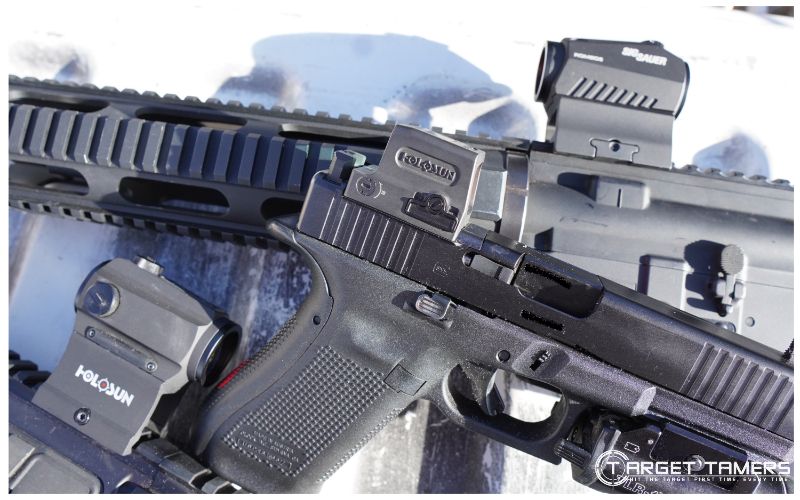
Overall, what may be accurate enough for a hunter may not be good enough for a match shooter. Accuracy is relative as it comes down to the application. While getting sub-MOA groups with a red dot earns bragging rights, many are happy to measure accuracy with the sounds of hitting steel.
Sometimes, accuracy problems have nothing to do with the red dot itself but with the shooter. Multiple things can go wrong from improper mounting to incorrectly calculating adjustments and even astigmatism can affect things.
But when you know what to expect from a red dot sight, you can correct, train, and experiment for the rest. After all, practice will give you a better understanding of how many different variables contribute to and affect accuracy.
Further Reading




